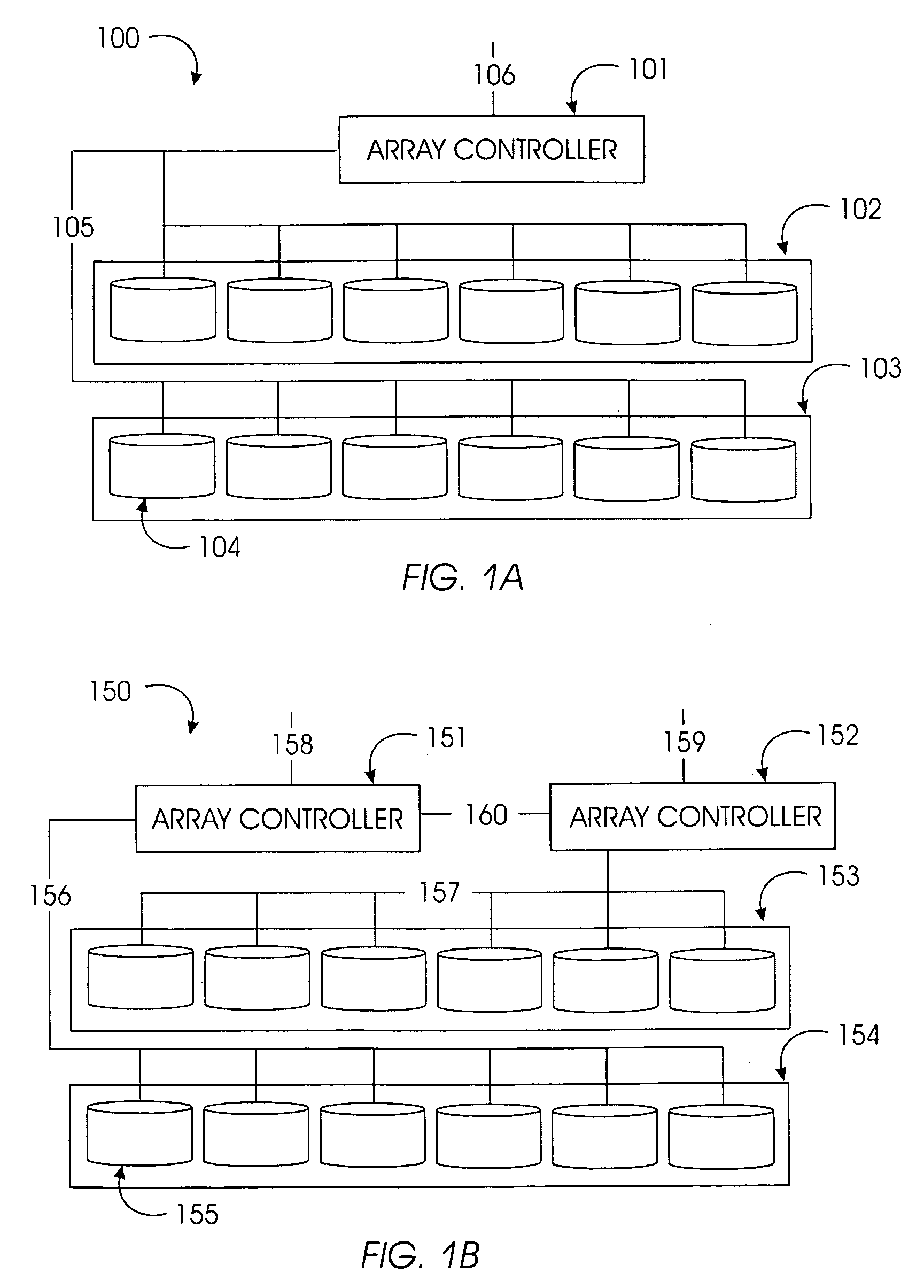Anamorphic Codes
a technology of anamorphic codes and codes, applied in the field of storage systems, can solve the problems of unit failure, stripe failure, loss of any three of its elements, etc., and achieve the effect of increasing the minimum distance of the array and enhancing the minimum hammering distance of the
- Summary
- Abstract
- Description
- Claims
- Application Information
AI Technical Summary
Benefits of technology
Problems solved by technology
Method used
Image
Examples
Embodiment Construction
[0039]The minimum number of failures of an array that can be tolerated by an Erasure or Error Correcting Code (ECC), such as a parity code, a Winograd code, a symmetric code, a Reed-Solomon code, an EVENODD code, or a derivative of an EVENODD code, is at least the minimum Hamming distance d of the ECC minus one, that is, d−1. The present invention enhances the minimum Hamming distance of an ECC by utilizing an operation, referred to herein as a “dodging” operation, for providing an “effective distance” that is greater than the Hamming distance of the ECC. Thus, the number of failures that an array can tolerate, whether a failure is a device failure or a hard error, is increased beyond the minimum distance provided by the ECC. As used herein, the terms “effective distance” and “effective minimum distance” refer to one plus the number of failures that can be tolerated by an array utilizing one or more dodging operations according to the present invention.
[0040]According to the present...
PUM
 Login to View More
Login to View More Abstract
Description
Claims
Application Information
 Login to View More
Login to View More - R&D
- Intellectual Property
- Life Sciences
- Materials
- Tech Scout
- Unparalleled Data Quality
- Higher Quality Content
- 60% Fewer Hallucinations
Browse by: Latest US Patents, China's latest patents, Technical Efficacy Thesaurus, Application Domain, Technology Topic, Popular Technical Reports.
© 2025 PatSnap. All rights reserved.Legal|Privacy policy|Modern Slavery Act Transparency Statement|Sitemap|About US| Contact US: help@patsnap.com



